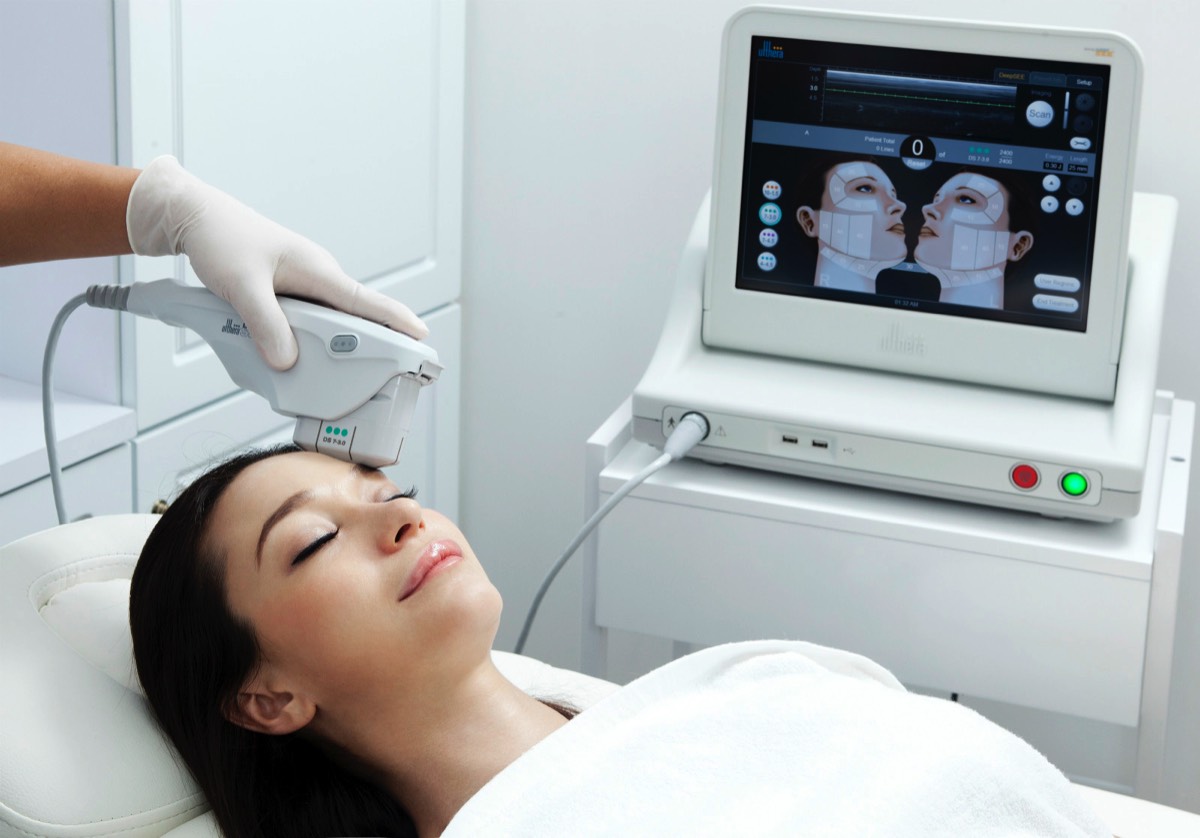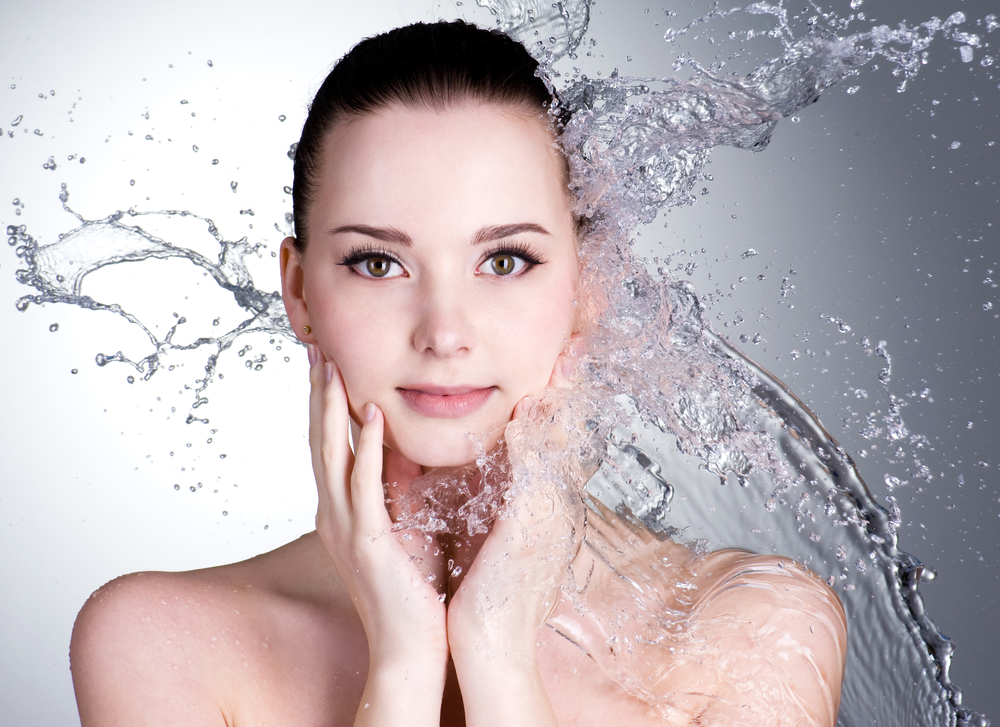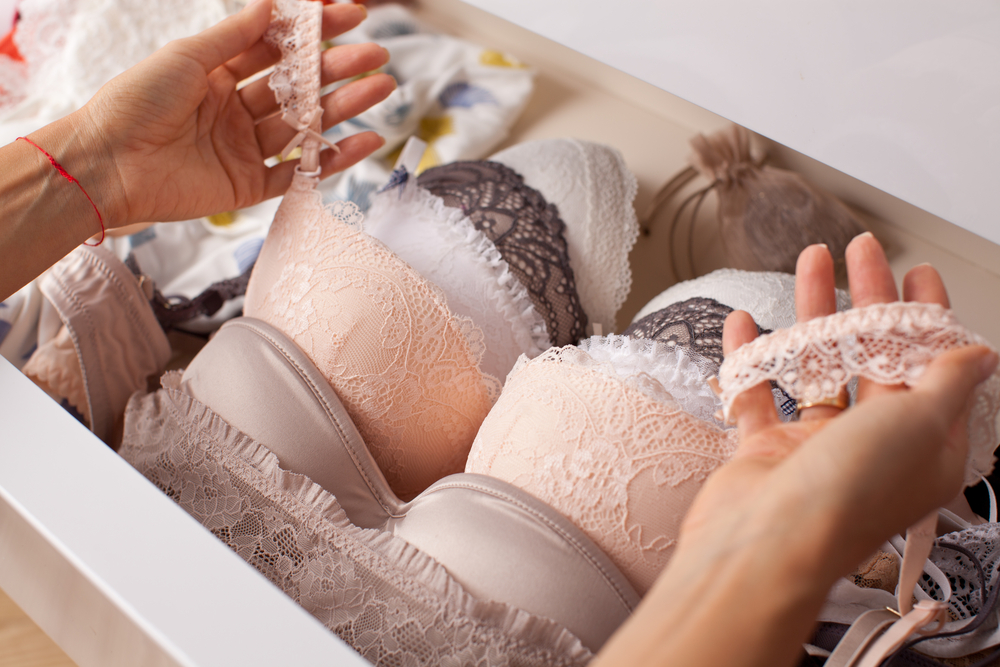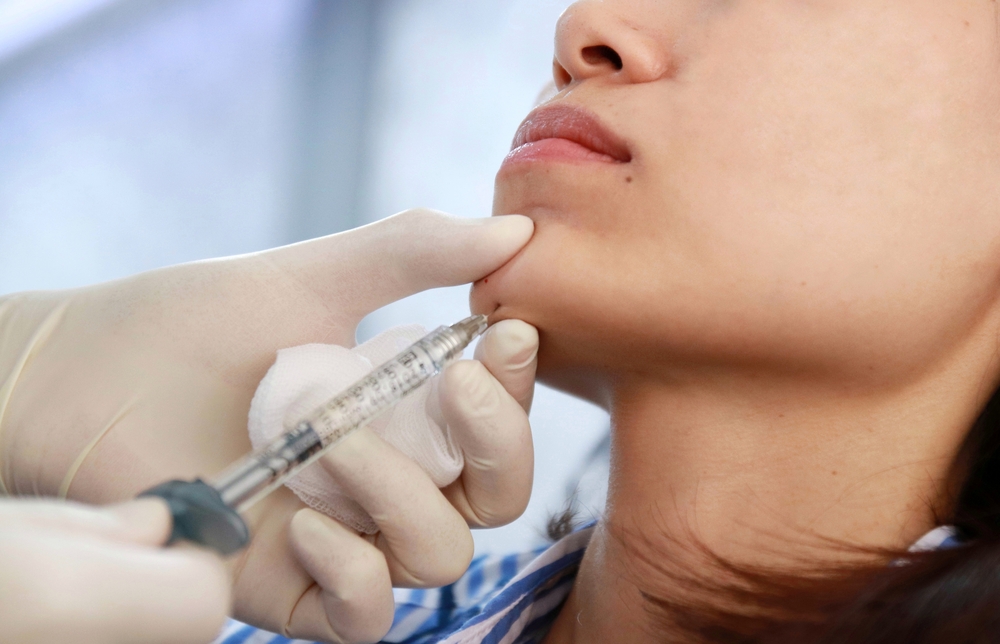Non-surgical, non-invasive aesthetic procedures work by causing controlled damage that jump-starts tightening, skin rejuvenation or weight loss.
If you’ve got nagging flaws you want to fix but are hesitant to go under the knife, there’s no shortage of non-surgical options. Whether it’s fine lines, wrinkles, loose skin, or unwanted pockets of fat, doctors are making use of the latest scientific breakthroughs in non-invasive treatment options to help you reach your goals.
We spoke with Charlotte, NC-based board certified dermatologist Elizabeth F. Rostan, M.D. about some of these new devices, which promise great results with little or no downtime. Here are a few that you’ll definitely want to ask about.
Radiofrequency energy
If you’re looking to tighten tissue, radiofrequency energy devices are a great solution to restore sagging skin. This energy penetrates the epidermis, causing collagen contraction and new collagen production, while leaving the skin’s outer layer undamaged.
Pelleve
Dr. Rostan uses a multitude of radiofrequency devices on her patients. She favors a relatively new device called Pelleve for the eyelid area, which with its very small hand piece offers greater precision on the delicate folds of the eyelid.
Venus Legacy
For the body, Dr. Rostan prefers the Venus Legacy for its “ease of use and the combination of suction that makes it easier to treat the body and smooth cellulite.”
The Venus Legacy works by emitting multi-polar radio frequencies and pulsed magnetic fields to produce a heat matrix over the skin, thereby stimulating the body’s own healing response, leading to tightening, diminished wrinkles and a reduction in cellulite.
Infini
Another new radiofrequency device adds micro-needling into the mix: Infini uses fine needles that penetrate the skin at different depths, emitting radio frequencies in those layers, tightening the skin and combating fine lines and wrinkles.
Numerous passes with the device are made to activate tightening at the deep, mid and superficial layers. Besides the benefit of tissue tightening, this device also treats surface texture issues such as crepey skin, stretch marks and scarring.
Thermage
Thermage is an FDA-approved procedure that heats the skin’s deeper layers to stimulate the body’s natural production of collagen and elastin. While Thermage does address skin laxity, it has no effect on blemishes, scars, or varicose veins.
Early studies have shown that it produces mild tightening around the eyes and in the lower face. It is most commonly used for crow’s feet, drooping eyelids, and along the jawline. It can also be used to reduce the appearance of excess skin in the midsection, thighs, and around joints.
Thermi
ThermiTight and ThermiSmooth are two more radiofrequency devices that treat lax skin. ThermiTight utilizes a small probe that actually goes under the skin to heat the underlying structures. Though it’s not non-invasive, it is minimally invasive.
ThermiSmooth has a hand piece that’s used on the surface of the skin to heat the underlying tissues and boost collagen production and skin tightening.
Vanquish ME
Vanquish ME is used for body contouring and fat reduction, targeting stubborn adipose tissue without affecting the skin above it or the muscle below.
If you have a bit of a pooch, a muffin top, or love handles that won’t budge with diet and exercise, this virtually painless procedure works by heating up and destroying the fat cells so your body can eliminate them.
Ultrasound
Ultrasound treatments focus ultrasonic energy on the deep layers of your skin. Unlike lasers, radiofrequency, surgery and other techniques, this non-surgical procedure bypasses the surface to deliver energy at precise depths and temperatures, triggering a healing response under the skin.
Ultherapy
Ultherapy is ideal for lifting and tightening the brow, jawline and neck. After your skin is marked and the ultrasound gel is applied, your doctor can see below your skin on a screen and stimulate specific areas with strategically directed thermal bursts.
These bursts don’t damage your epidermis. Instead, they only reach the deep layers of your skin for controlled damage, stimulating new collagen growth to lift and tighten skin. Results can take up to three months to see.
Liposonix
Liposonix is another ultrasound device, but this one is used to target and destroy fat cells. A single one-hour session can help sculpt away fat on areas like the love handles, bra bulges, thighs and more.
Laser skin tightening
“The most exciting thing about lasers right now is combining multiple lasers in the same treatment session to achieve better results for patients in less time,” says Rostan, who uses fractional non-ablative lasers — great for treating sun damage — in tandem with treatments for redness such as Vbeam pulsed dye laser or intense pulsed light.
Adding a laser treatment that’s specific for pigmentation such as a Q-switched laser or long-pulsed alexandrite can also give better results than the fractional treatment alone.
Acne scars can also be treated with combined techniques. For example, CROSS (Chemical Reconstruction of Skin Scars) with high-concentration TCA for ice pick scars and pulsed dye laser for redness are in some cases used in combination with a non-ablative or ablative fractional resurfacing.
Non-invasive fat removal
No-knife fat removal procedures such as CoolSculpting and Zerona are increasingly popular, as they offer patients minimally invasive or non-invasive body contouring alternatives to liposuction.
Non-surgical fat removal treatments employ a variety of different modalities to pinpoint and eliminate unwanted pockets of fat.
CoolSculpting
CoolSculpting is a fat-freezing device that originally passed FDA clearance for the abdomen, but a new handheld piece is helping it make the rounds for use under the chin as well.
By controlled cooling of the targeted areas, it’s an ideal way to eliminate fat that resists diet and exercise efforts. These chilled fat cells are then metabolized by your body and naturally eliminated weeks later.
SculpSure
Where CoolSculpting fights fat with cold, SculpSure uses laser-focused heat. According to its manufacturers, SculpSure can result in a 24% reduction of fat in the targeted areas after only one session.
The procedure has been FDA-cleared to work on the back, thighs, love handles, stomach and under the chin.
Zerona
Zerona is a non-invasive body contouring treatment that uses cold laser technology to emulsify fat and allow it to be removed safely from stubborn areas that don’t respond to exercise and dieting. The procedure is particularly effective for removing fat from a person’s waist, hips and thighs. It works by releasing only the cellular contents of fat cells, while leaving other cells and capillaries intact.
Zerona does not require anesthesia, because there is no pain. No bandages are required and there is typically no downtime or unpleasant side effects.
Non-Invasive Treatments: Frequently Asked Questions
What issues can non-invasive beauty treatments address?
All kinds of issues, from stubborn areas of excess fat to fine lines, wrinkles, and lax skin.
What methods and technologies are involved?
Some of the most popular non-surgical cosmetic methods and technologies on the market include:
- Radiofrequency
- Ultrasound
- Laser rejuvenation
- Cold therapy
It all depends on what you’re looking to accomplish.
Are there non surgical fat removal treatments?
Yes, there are several, including CoolSculpting, truSculpt and Zerona. All of these are considered minimally invasive or non-invasive body contouring alternatives to liposuction.
Do these fat-removal treatments cause bruising?
Not much, if any. Unlike surgical fat removal methods (i.e., liposuction) non-surgical fat removal treatments are relatively gentle and lead to minimal discomfort.
Are there any downsides to non-surgical beauty treatments?
Non-surgical aesthetic procedures present low risks of complications, although scarring and pigmentation issues may occur in certain cases.
Discuss the pros and cons of each treatment with your cosmetic doctor, who will advise you on the risks and benefits.
What new treatments can we expect in years to come?
There’s a new treatment pending FDA approval in the US that’s being compared to Botox for its ability to temporarily paralyze wrinkles: as of June 2017, Iovera or “Frotox” is available in Canada and Europe for treating wrinkles, but has only received clearance in the US for its pain management properties.
Instead of using a toxin the way Botox does, it works by sending a burst of freezing cold into targeted nerves, basically shocking them so they’re out of commission for up to four months.









